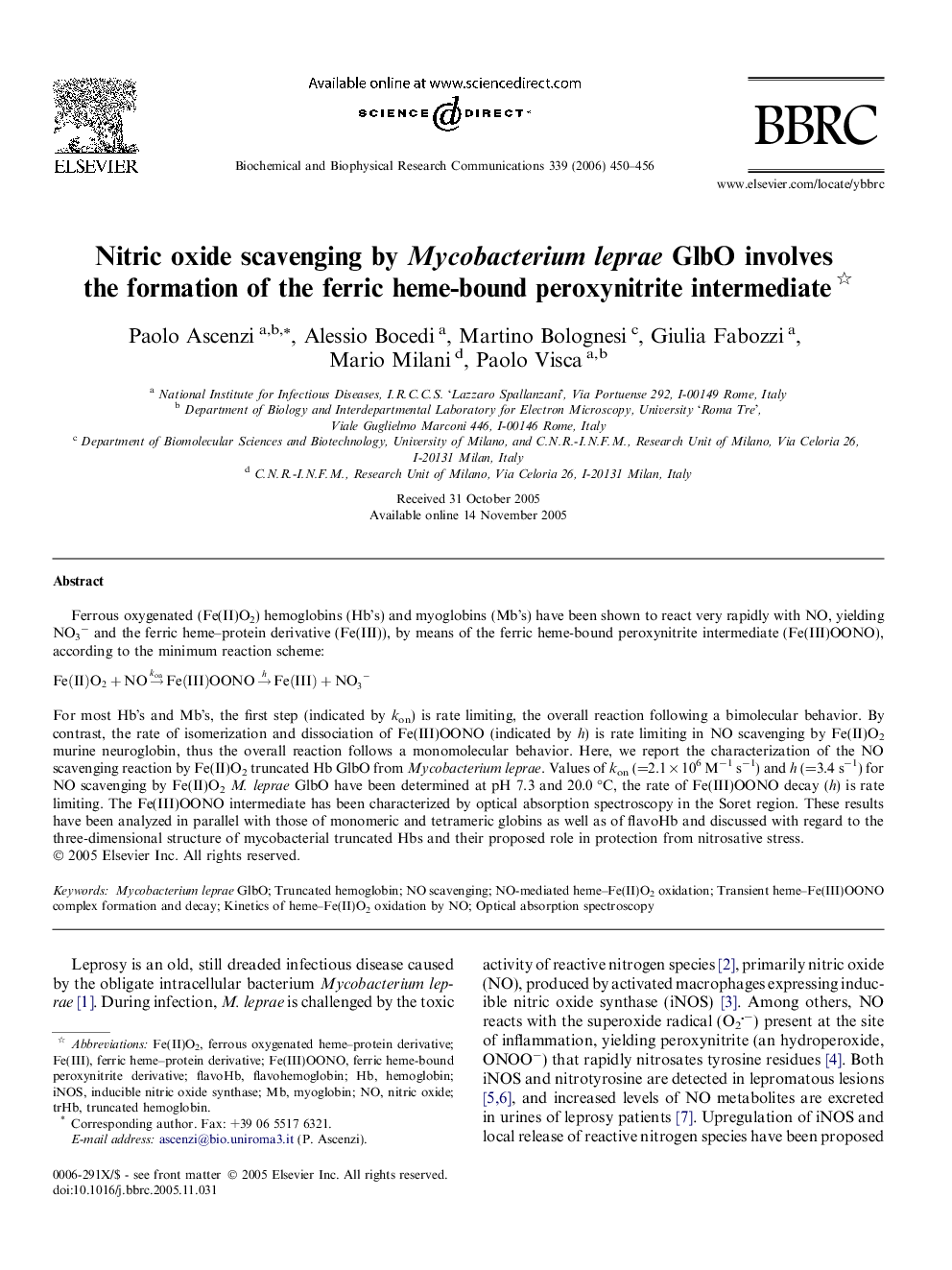| Article ID | Journal | Published Year | Pages | File Type |
|---|---|---|---|---|
| 1940958 | Biochemical and Biophysical Research Communications | 2006 | 7 Pages |
Ferrous oxygenated (Fe(II)O2) hemoglobins (Hb’s) and myoglobins (Mb’s) have been shown to react very rapidly with NO, yielding NO3− and the ferric heme–protein derivative (Fe(III)), by means of the ferric heme-bound peroxynitrite intermediate (Fe(III)OONO), according to the minimum reaction scheme:Fe(II)O2+NO→konFe(III)OONO→hFe(III)+NO3-For most Hb’s and Mb’s, the first step (indicated by kon) is rate limiting, the overall reaction following a bimolecular behavior. By contrast, the rate of isomerization and dissociation of Fe(III)OONO (indicated by h) is rate limiting in NO scavenging by Fe(II)O2 murine neuroglobin, thus the overall reaction follows a monomolecular behavior. Here, we report the characterization of the NO scavenging reaction by Fe(II)O2 truncated Hb GlbO from Mycobacterium leprae. Values of kon (=2.1 × 106 M−1 s−1) and h (=3.4 s−1) for NO scavenging by Fe(II)O2M. leprae GlbO have been determined at pH 7.3 and 20.0 °C, the rate of Fe(III)OONO decay (h) is rate limiting. The Fe(III)OONO intermediate has been characterized by optical absorption spectroscopy in the Soret region. These results have been analyzed in parallel with those of monomeric and tetrameric globins as well as of flavoHb and discussed with regard to the three-dimensional structure of mycobacterial truncated Hbs and their proposed role in protection from nitrosative stress.
